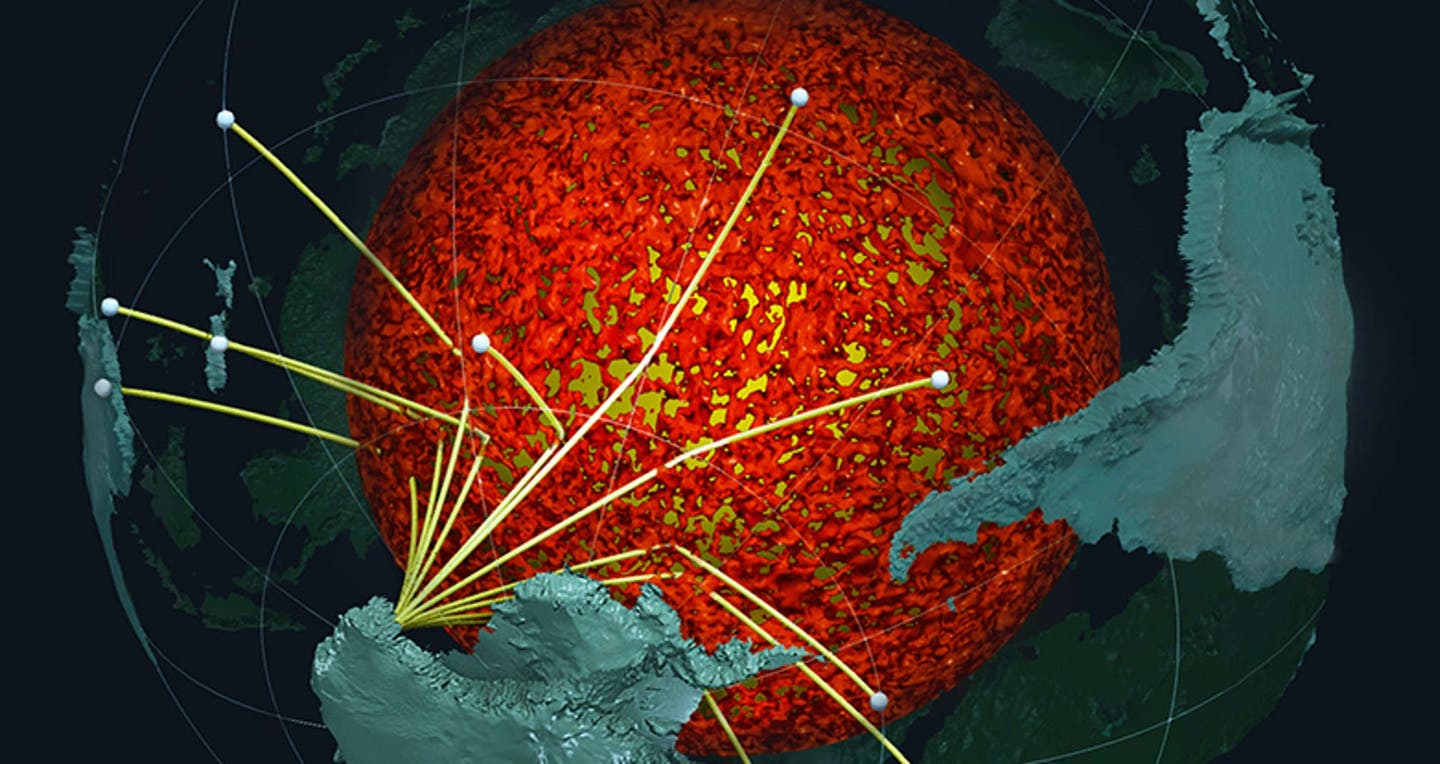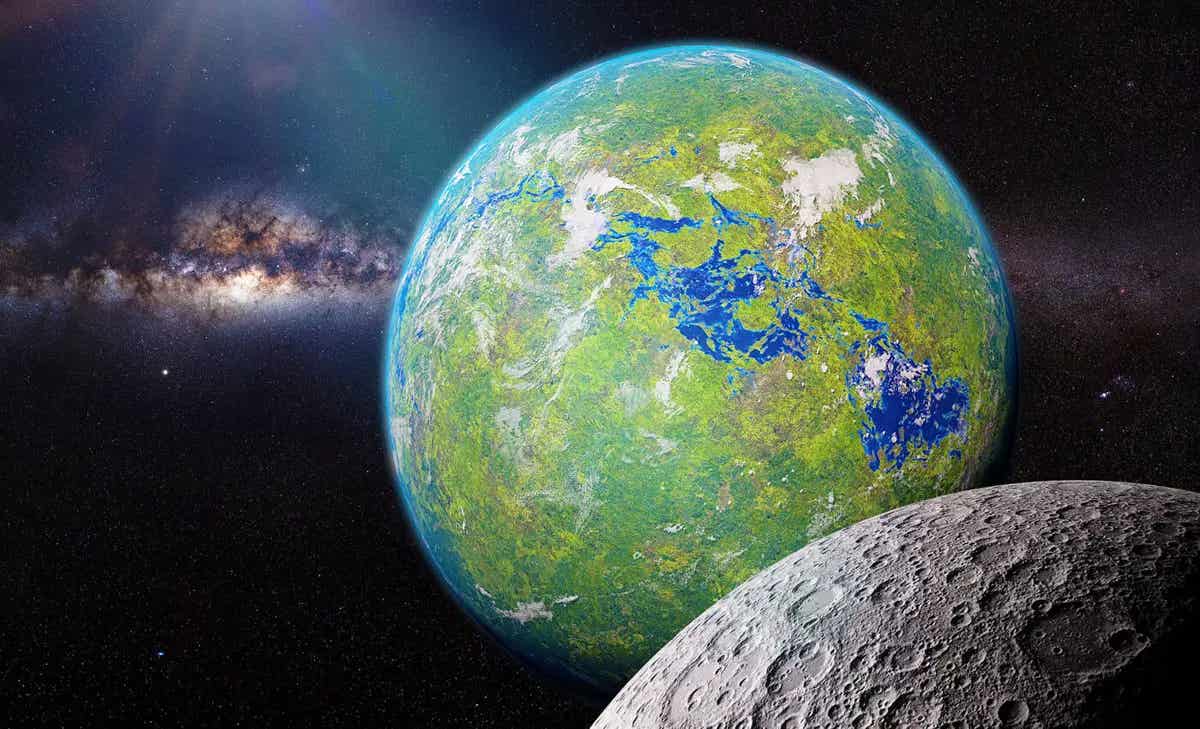Researchers discover an ancient structure circling Earth’s core
Situated approximately 2,900 kilometers (1,800 miles) beneath the Earth’s surface lies this remarkable layer.

[Sept. 9, 2023: Staff Writer, The Brighter Side of News]
In this representation of the underground imaging, seismic waves from earthquakes in the southern hemisphere sample the ULVZ structure along the Earth’s core-mantle boundary and are recorded by sensors in Antarctica. (CREDIT: Drs. Edward Garnero and Mingming Li at Arizona State University)
In a groundbreaking study, the latest high-resolution map of Earth’s Southern Hemisphere has exposed a previously unknown element of our planet's geology: remnants of an ancient ocean floor that might encircle the very core of our Earth.
Situated approximately 2,900 kilometers (1,800 miles) beneath the Earth's surface lies this remarkable layer. To visualize this, one needs to understand that this depth signifies the transitional area where the molten, metallic outer core converges with the rocky mantle that towers above it, an intersection known scientifically as the core-mantle boundary (CMB).
Geologist Samantha Hansen from the University of Alabama elaborated on the findings, stating, "Seismic investigations, such as ours, provide the highest resolution imaging of the interior structure of our planet, and we are finding that this structure is vastly more complicated than once thought."
The implications of such a discovery are profound. With a comprehensive grasp of the intricate terrains beneath our feet, we gain enhanced insights into a myriad of phenomena: from the complexities of volcanic eruptions to the fluctuations in Earth's magnetic field—a shield that acts as our planet's guardian against the potentially hazardous solar radiation emanating from space.
Related Stories
In a feat of ingenuity and perseverance, Hansen, along with her research team, employed 15 seismic monitoring stations, strategically entrenched in the ice expanses of Antarctica. These stations, over a span of three years, painstakingly mapped the seismic waves resulting from earthquakes.
The undulations and ricochets of these waves offer a sonic snapshot of the Earth’s interior makeup. Certain areas within this snapshot, characterized by slower-moving sound waves, are termed ultralow velocity zones (ULVZs).
Edward Garnero, a geophysicist from Arizona State University, shed light on their approach, expressing, "Analyzing thousands of seismic recordings from Antarctica, our high-definition imaging method found thin anomalous zones of material at the CMB everywhere we probed."
Maps showing the locations along the CMB of prior ULVZ and seismic wave scattering investigations (1, 6) in both global view (left) and in the Southern Hemisphere (right). (CREDIT: Science Advances)
He further elaborated on the diverse dimensions of these zones, commenting, "The material's thickness varies from a few kilometers to tens of kilometers. This suggests we are seeing mountains on the core, in some places up to five times taller than Mt. Everest."
According to the collective findings of the researchers, the most plausible origin of these ULVZs appears to be oceanic crust submerged and preserved over eons. It is worth noting that the present location of this buried crust doesn't align with existing subduction zones on the surface.
Researchers lower seismic equipment into place at one of the stations as part of research into the Transantarctic Mountains. (CREDIT: Lindsey Kenyon)
These zones are essentially Earth's conveyor belts where mobile tectonic plates thrust rock into the depths of the planet. However, simulations incorporated in the study propose an intriguing narrative: ancient convection currents may have relocated the prehistoric ocean floor to its enigmatic position today.
While the data derived from seismic waves is indeed illuminating, it also mandates caution. Interpreting rock types and their movement based purely on seismic wave behavior can be fraught with complexities. Despite the challenges, the submerged ocean floor theory currently stands as the foremost explanation for the existence of the ULVZs.
A researcher positions a seismometer. (CREDIT: Lindsey Kenyon)
Moreover, there's budding speculation that this bygone oceanic crust might encompass the entirety of the core. Its slender nature, however, renders it challenging to ascertain with absolute certainty. The promise of future seismic surveys augurs hope for a more refined and comprehensive understanding.
The ramifications of this discovery extend to elucidating the thermal dynamics of our planet. As geologists grapple with understanding the mechanisms governing the escape of heat from the core into the mantle, this revelation brings with it fresh perspectives. The compositional disparities between these deep-seated layers are astoundingly more pronounced than those between the surface rock and the atmospheric blanket above.
"Our research provides important connections between shallow and deep Earth structure and the overall processes driving our planet," Hansen concluded, signifying a pivotal moment in the annals of geological research. The Earth, as it turns out, still keeps some of its oldest tales tucked away, waiting for curious minds to uncover.
For more green news stories check out our Green Impact section at The Brighter Side of News.
Note: Materials provided above by The Brighter Side of News. Content may be edited for style and length.
Like these kind of feel good stories? Get the Brighter Side of News' newsletter.
Joseph Shavit
Head Science News Writer | Communicating Innovation & Discovery
Based in Los Angeles, Joseph Shavit is an accomplished science journalist, head science news writer and co-founder at The Brighter Side of News, where he translates cutting-edge discoveries into compelling stories for a broad audience. With a strong background spanning science, business, product management, media leadership, and entrepreneurship, Joseph brings a unique perspective to science communication. His expertise allows him to uncover the intersection of technological advancements and market potential, shedding light on how groundbreaking research evolves into transformative products and industries.



